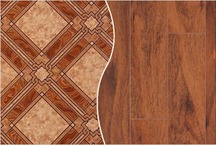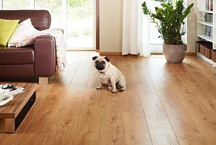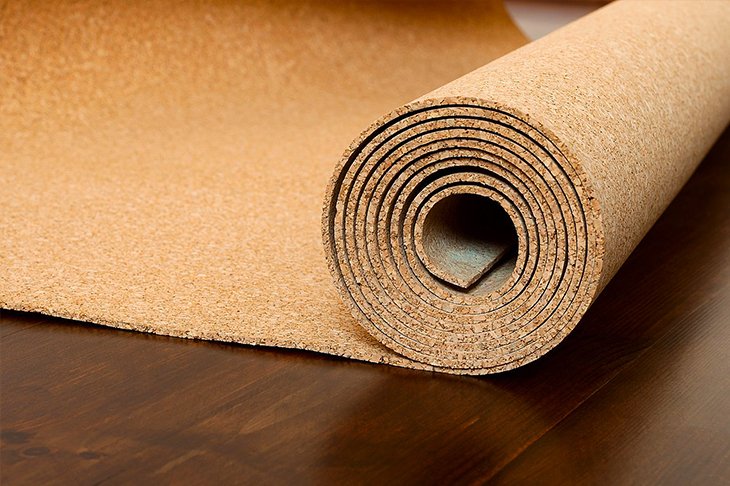
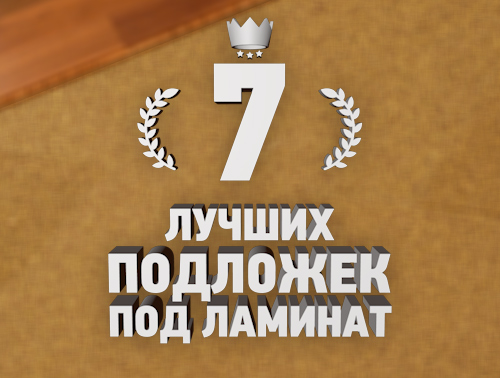
To recommend the best substrates to you, we took into account the opinion of representatives of the manufacturers of the most popular laminate brands, analyzed reviews of masters and users on specialized Internet resources and building forums, and technical characteristics of materials.
Selection criteria
The selection was made by us on the basis of the parameters below, which we are guided by when choosing and offering you.
Noise reduction
By this is meant the absorption of “shock” (reflected and transmitted) noise. The reflected noise you hear when you walk on the floor, passing - this is the one that is heard by your neighbors below. Immediately make it clear: from the noise of neighbors under you, ANY substrate will not save you, it is YOU who saves them from the thunder of their heels.
Relationship to moisture
Substrates from different groups react differently to moisture. Note that a prerequisite for a guarantee on laminate from manufacturers is the presence of a waterproofing film with a thickness of 200 microns.
Thermal insulation
This indicator is important if the floors are located above basements, unheated garages, aisles.
Density, thickness
For laminate, the ideal is the most solid base. In this case, the wear of the locks will be minimal. The softer and thicker the substrate, the faster the coating will become unusable. If the thickness is more than the optimal (!) 3 mm, then there is a high probability of cracks due to wear of the locks.
Reaction to roughness of the main floor
The denser the material (and the greatest density at the cork), the worse its leveling abilities and the more carefully the base should be leveled. The curvature of a large radius you do not align anything!
Lifetime
Under the expensive laminate with a lifetime of 15 years it is not economically feasible to lay a cheap polyethylene substrate, which is izotrtsya a couple of years.
Suitability for use with underfloor heating
This characteristic is relevant for those who plan to lay laminate flooring on underfloor heating.
Easy installation
Some types of roll substrates (from cork, in particular) tend to curl when laying. In this case, it is better to take sheet material.
The best manufacturers (brand) substrates
Famous manufacturers of laminate for their products strongly recommend the use of branded substrate. Otherwise, they reserve the right to refuse to consider the claim, if any. However, they all favor the cork substrates from Portugal and extruded polystyrene brand VTM. Excellent feedback on Parkolag and Izoplin as handlers and buyers. Well proven in the operation of the substrate from the SPE Quick Step. But the domestic analogue will provide you with “bubbles” and “waves” after installation. We do not recommend extruded polystyrene of Russian and Chinese brands: in the product description, their characteristics are too high.
Our ranking of the best substrates
Based on the information collected, taking into account the recommendations of the leading manufacturers of laminate of the most famous brands - Quick Step, Egger, Tarkett, BerryAlloc, Par-Ky, Haro, Karelia-Upofloor, we selected the best substrates in different groups.
| A place | Title | average price | Nomination | Description | Our rating |
|---|---|---|---|---|---|
| The best natural substrates | |||||
| 1. | Premium Cork (Cork), Portugal | 90 rubles / m2 (2 mm) 145 rubles / m2 (3 mm) |
Natural cork Highest density Lowest thermal conductivity |
Material "technical cork" of compressed bark of cork. It has great resistance to deformation, good noise and vibration absorption, excellent thermal insulation properties. It fits exclusively on a thick film. Sold in rolls and sheets. Not recommended for heated floors. | 9 out of 10 |
| 2. | PARCOLAG (Parkolag) | 95 rub./m2 (3 mm) |
Bituminous Cork Top Features | Ventilated substrate.It is Kraft paper impregnated with natural bitumen with natural cork dressing (granules of 2-3 mm in size). It is characterized by high noise absorption, excellent noise and moisture insulation. Roll material. | 9 out of 10 |
| 3. | Isoplaat (Isoplat) | 55 rubles / m2 | The best thermal insulation, acoustics, leveling | Fiberboard on resin hvoyniki for sound insulation. Aligns roughness of the subfloor to 4 mm. It is characterized by high thermal insulation, natural ventilation, vapor permeability. Effective damping of “shock” noise, sound dissipation, moisture resistance. | 9 out of 10 |
| Best extruded polystyrene substrates | |||||
| 1. | VTM, IsoPolin (Isopolins) | 55 rubles / m2 | The best price-performance ratio | Material - polystyrene film. This rigid XPS underlay is “in the middle” between cork and polyethylene in terms of installation complexity and cost. Excellent noise isolation, minimal moisture absorption. Excellent thermal insulation properties, maintained at high humidity. | 10 out of 10 |
| The best polyethylene substrates | |||||
| 1. | Tuplex (Tuplex) | 99 rubles / m2 | The most technological | Ultramodern composite material consisting of polystyrene beads between two layers of polyethylene of different thickness. It has excellent moisture and noise insulation properties. The membrane design of the lower layer of the duplex allows you to ventilate the space under the laminate: moisture seeps in, and then displayed under the plinths. | 9 out of 10 |
| 2. | Izolon PES | 35 rubles / m2 | Cheapest substrate | Heat resistant, finely porous substrate of foamed "crosslinked" PES. Exceeds IPP in all respects. | 8 out of 10 |
| 3. | Foiled Isolon PPE | 56 rubles / m2 | Foil | Insulating substrate Isolon PES with a layer of 14 μm thick deposited on one side. | 7 out of 10 |
The best natural substrates
Immediately we will clarify that the natural origin of the substrate in this case does not give any advantages in terms of ecology, since there will be a laminate on top of it, which, as is known, is an artificial material.
Cork substrate Premium Cork (Cork)
Rating 9 out of 10
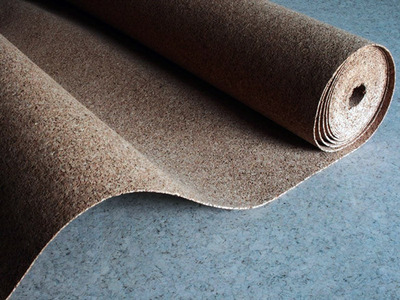
Photo: vopros-remont.ru
Average price in Russia: 90 rubles / m2, 2 mm thick (145 rubles / m2 - 3 mm thick)
Advantages: One of the best substrates produced in Portugal, Spain. Very high density means the stability of both her and the laminate locks to deformation under loads. Due to the high damping properties of the floor over time will not "play." Due to its very low thermal conductivity, it is a good insulation of floors above unheated rooms. Since it absorbs noise well, it will be an excellent solution for children's playrooms. It can be operated with high-class laminate, without requiring replacement, 25 years. Unlike the Chinese counterpart, it does not crumble, is good in laying and operation, does not harm the laminate.
Disadvantages: High price. Rumbles on a badly leveled ground. It is best to apply on wooden floor, plywood, chipboard. It absorbs moisture, therefore it requires waterproofing of concrete and is not recommended for wet rooms and kitchens.
Typical reviews
“Under the cork, it is necessary to carefully remove the base! I ran into this ... "
“... hard to lay. When the roll ends, the cork strongly tends back, and there are fears that it, crumpled, will fall under the laminate. ”
Parkolag (Parkolag)
Rating 9 out of 10
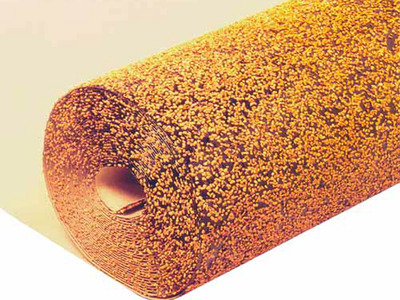
Photo: strmnt.ru
Advantages: High noise absorption, wear resistance, very high moisture insulation make this ventilated substrate one of the best. Cork powder, which retains its elasticity, contributes to the long service life of the laminate, and bitumen prevents the penetration of moisture from the concrete screed. The presence of air exchange prevents the formation of condensate, fungus, mold. Keeps linear dimensions under a very significant pressure and with a change in temperature and humidity conditions. Reliable substrate, which will be an excellent solution for expensive brands of laminate and will serve, without causing problems, for many years.
Disadvantages: Can not be used under the warm floor.
Reviews:
“Compared with technical cork, as a mixed version, it is more versatile, and moreover, it is more wear-resistant. Wins in terms of a barrier to excess moisture. "
“As a substrate, I have always been sympathetic to Pargolg, about whom I heard a lot of tales, such as bitumen that does not stink childishly, etc. All this is nonsense.
“I bought a parcolag under the laminate. Fine! And there is no smell, and tiiiiho ... "
Isoplat (Isoplaat startfloor barlinek)
Rating 9 out of 10
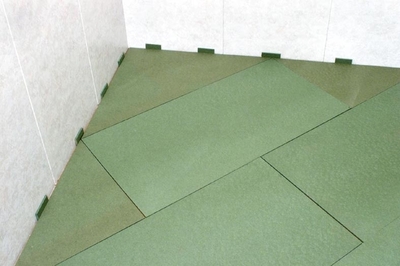
Advantages: An ideal substrate for a warm floor due to its absolute safety when heating. Due to its porous structure, it has good sound and sound absorbing, acoustic and thermal insulation properties, heat resistance. The special structure of the lower layer allows air to circulate freely, providing ventilation properties. In addition, thanks to the antiseptic impregnation is protected from mold and mildew. In terms of elasticity, thermal conductivity, resistance to compression, sound absorption, durability and naturalness is akin to traffic jam. As for thermal insulation, due to the thickness of the Isoplat, it is 3 times higher and comparable to soft insulation.
Disadvantages: Slabs of smaller thickness are not produced.
Reviews:
“I have an isoplaat of 5 mm lying under 33 laminates. Elastic, warm to the touch, well dampens noise. With two young children, the neighbors below us simply do not hear (their opinion). "
Best extruded polystyrene substrates
VTM, IsoPolin (Isopolins)
Rated 10 out of 10
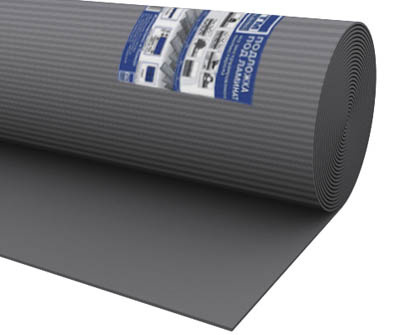
Photo: skill-spb.ru
Average price in Russia: 55 rubles / m2 (3 mm thick)
Advantages: Stable base for laminated floors, making even diagonal laying of the laminate easy to use. Due to the closed moisture-proof pores is an ideal waterproofing. The optimally chosen density is expressed in a fairly high resistance to external pressure and at the same time the absence of strong rigidity. The latter quality compensates for unevenness of the floor up to 3 mm and contributes to increased sound insulation: the absorption noise impact noise is approaching the traffic jam. Technical specifications are similar to Izoplat plates. Mechanical pressure does not have a destructive effect on the structure; therefore, its high heat and sound insulating properties of the VTM and IsoPolin substrate do not lose over time. Service life more than 10 years.
Disadvantages: Not suitable for rooms with high traffic and load (dance halls, fitness clubs, etc.). Not suitable for underfloor heating.
Reviews:
"The laying properties and the resistance to subsidence of the XPS substrate and the Isoplat are almost the same."
“As a builder, I’ll say: working with him is pleasant and simple, many customers require just such a substrate.
"In the Olympic Village ... a huge demand for this substrate among understanding people."
The best polyethylene substrates
Tuplex (Tuplex)
Rating 9 out of 10
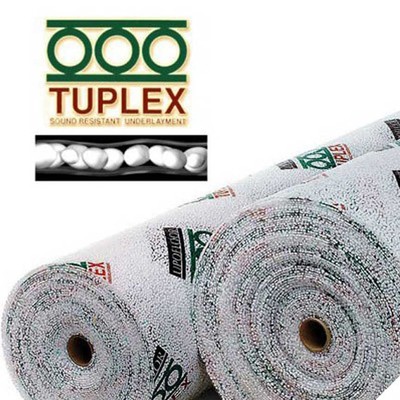
Average price in Russia: 99 rubles / m2 (3 mm thick)
Advantages: The Tuplex backing material adapts to the base shape, smoothing its small defects. Superbly absorbs shock noise, drowning out the sound of heels. This quality allows Tuplex to be recommended for both residential and office use. Due to the low compression (14 times less compared to polyethylene foam), it retains its shape well and prevents the laminate from sagging. The unique structure of the material allows you to remove moisture naturally, but this advantage is reduced to zero in the presence of a waterproofing film. Suitable for warm floors.
Disadvantages: Heating efficiency from heated floors is lower compared to traditional heat-conducting substrates due to dispersion of a part of air.
Reviews:
“The best thing ... with which I worked was Tuplex. Very comfortable in styling. "
“I heard complaints about it. The main idea: polystyrene balls are deformed with time ... Maybe this is not so, but it makes sense to think. ”
“... tried compression - not restored. Although the annotation says more.
Izolon PES
Rating 8 out of 10
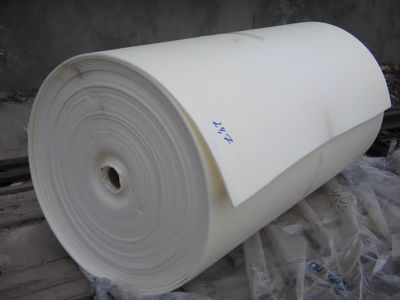
Virtues: Good heat and sound absorbing parameters of “cross-linked” closed-cell polyethylene, its ecological purity, elasticity and elasticity, increased moisture resistance and hydrophobicity, inertness to “chemistry”, bacteria and relative cheapness make Izolon PES substrate (not to be confused with Izolon NPE!) preferred for use in residential and public buildings. These qualities can be maintained at Izolon PES for a long time under any operating conditions. Does not deform under load, does not burn and does not emit toxic substances. Over time, it does not collapse, does not lose stability and durability, in contrast to gas-filled polyethylenes Izolon NPP, Penofol, Polyizol, etc. The service life in normal conditions is more than 25 years. The optimal solution for floor heating.
disadvantages: Despite good thermal insulation performance, you should not count on floor insulation with a material thickness of 2–4 mm.
Reviews:
“If you take Izolon, then PES is white with very dense small bubbles, but not our SPE!”
"Compared with the plug at Izolon, compression and recovery are much worse."
Foiled Isolon PPE
Rating 6 out of 10
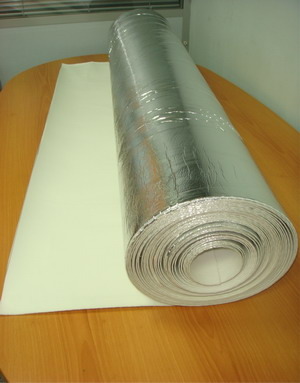
Virtues: In addition to the advantages of Izolon PFE, the foil layer, which is a reflective heat insulation, enhances the heat and vapor barrier properties and reduces heat loss by 97%. Important: the efficiency of foil insulation is higher, the higher the temperature difference between the subfloor and the room. For the ground floor with a concrete floor, Izolon PPE foil is useful, for an apartment on the fourth floor there will be no gain in temperature. But as a heater, it is perfectly combined with an infrared heated floor.
Reviews:
"To foil gave a tangible effect during heat reflection, the temperature would. B. around 60 ° C. Therefore, foil on the foam ... a good marketing move ... ".
"... living in a plastic bag requires constant ventilation."
Which substrate is better to buy?
Often, even professionals have a diametrically opposite attitude to the same group of materials, and often poorly reasoned. Our rating of the best substrates does not give an unequivocal answer to this question, the choice is yours. Examine the characteristics of the material and choose the one that best suits your tasks, the degree of flatness of the foundation and your financial capabilities. At the same time keep in mind that thicker does not mean better, the thickness of the substrate should not exceed 3–4 mm, unless large is allowed by the manufacturer of the laminate.
